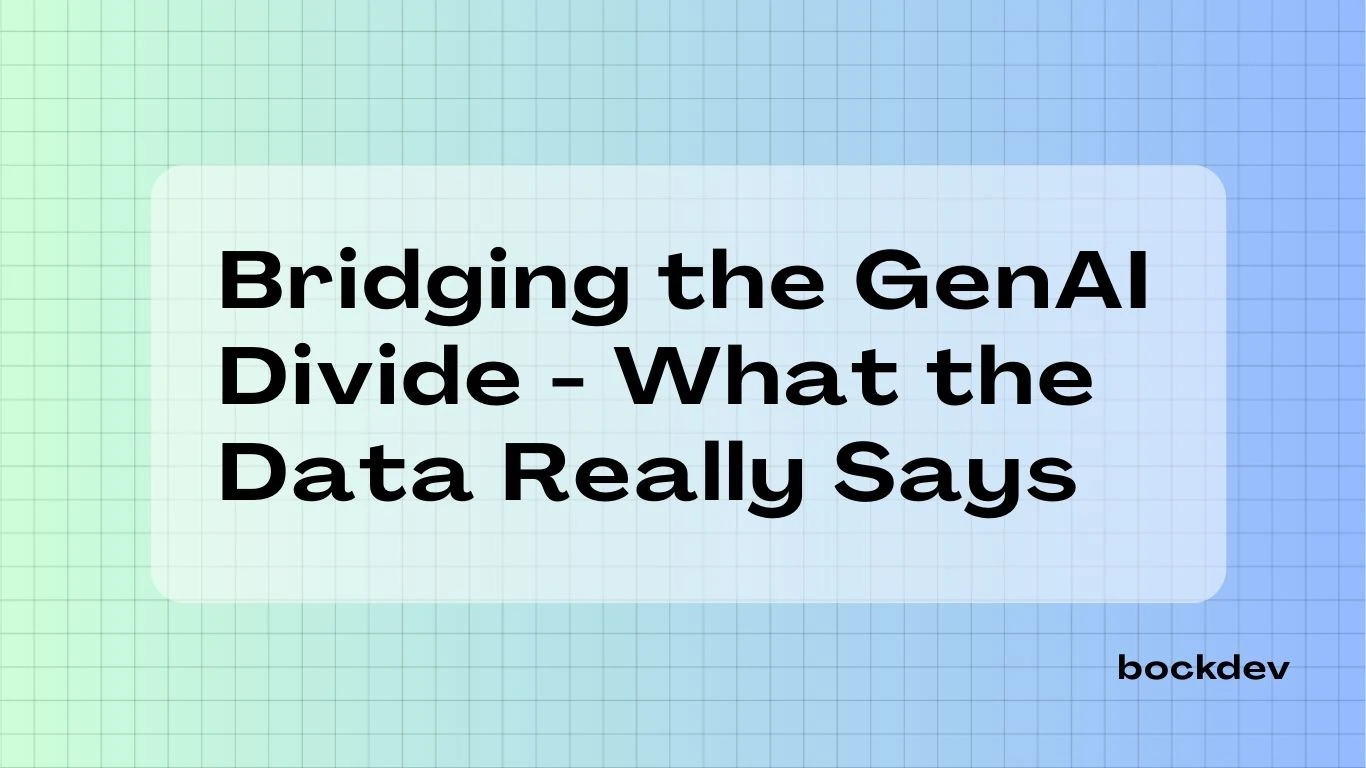
Generative AI (GenAI) is everywhere. Tools like ChatGPT and Claude have gone mainstream, and companies have poured $30–40 billion into enterprise AI. Yet, according to MIT’s Project NANDA research, 95% of organizations are seeing zero return on that investment. The result is what the researchers call the GenAI Divide, where a small group of winners extracting millions in value, and the vast majority stuck with pilots that never scale.
Let’s break down the data behind this divide.
Which Industries Are Actually Changing?
Despite the hype, real disruption is rare. Researchers built a GenAI Market Disruption Index, scoring industries on signs like new competitors, revenue growth of AI-native firms, and shifts in customer behavior.
Technology and Media & Telecom scored highest, with clear changes in workflows and AI-native content creation.
Professional Services and Healthcare & Pharma showed efficiency pilots (like transcription tools), but no structural shifts.
Consumer & Retail and Financial Services adopted automation in support and backend tasks, but customer relationships barely changed.
Advanced Industries and Energy & Materials barely experimented.
> **7** of **9** industries remain largely unchanged, proof that high adoption doesn’t equal transformation.
The Pilot-to-Production Chasm
Another stark table in the report shows the steep drop-off from pilot to deployment:
Generic LLMs (like ChatGPT): 80% investigated → 50% piloted → 40% implemented.
Custom enterprise tools: 60% investigated → 20% piloted → only 5% implemented.
That’s a 95% failure rate for tailored enterprise AI. Why? Tools are too brittle, lack memory, and don’t fit workflows. Enterprises run the most pilots but scale the least—whereas mid-market firms move faster, averaging just 90 days from pilot to rollout.
The Rise of Shadow AI
While corporate AI projects stall, employees aren’t waiting. The data shows:
Only 40% of companies officially buy LLM subscriptions.
But 90% of employees admit to using personal ChatGPT, Claude, or other tools daily for work.
This “shadow AI economy” delivers more immediate ROI than official initiatives. In practice, individuals are already crossing the GenAI Divide while their companies lag behind.
Where AI Budgets Go
When executives were asked to allocate a hypothetical $100 across functions, the split looked like this:
~70% went to sales & marketing (emails, lead scoring, campaigns).
~20% to customer service (chatbots, ticket routing).
~10% to finance & procurement (AP/AR automation, supplier risk alerts).
This reveals a bias toward visible, top-line functions, even though the report shows back-office automation often yields higher ROI, such as eliminating BPO contracts or reducing agency costs.
Why Pilots Stall: The Learning Gap
Surveyed users ranked the biggest barriers to adoption:
Resistance to adopting new tools.
Model output quality concerns.
Poor user experience.
Lack of executive sponsorship.
Change management challenges.
But the deeper problem is the “learning gap”: most AI tools don’t remember, adapt, or improve. Employees love ChatGPT for drafts and brainstorming, but 90% prefer humans for complex, high-stakes work because AI forgets context.
What Winners Do Differently
The data shows clear differences between vendors and buyers who cross the divide:
Winning startups focus on narrow but high-value workflows (e.g., call summarization, contract review), integrate deeply, and improve through feedback.
Successful buyers act less like SaaS customers and more like BPO clients. They demand deep customization, measurable outcomes, and long-term adaptability.
NOTE
Buy, don’t build. Start small, prove value fast, and expand.
Success vs. Failure in GenAI Projects
| Aspect | Successful Projects (Cross the Divide) | Failed Projects (Stuck on the Divide) |
|---|---|---|
| Approach | Buy & partner with vendors; treat them like BPO providers | Build internally; over-engineered, rigid tools |
| Scope | Narrow but high-value workflows (e.g., contract review, call summarization, back-office automation) | Broad, generic solutions with little workflow alignment |
| Adoption Speed | 90 days avg. pilot → rollout (mid-market firms) | 9+ months, often stalling before deployment (large enterprises) |
| Learning & Memory | Tools adapt, retain context, and improve with feedback (agentic AI systems) | Tools forget context, don’t learn, require repetitive manual input |
| User Experience | Familiar, fast, and integrated with existing systems | Poor UX, disconnected from daily workflows |
| Investment Focus | Back-office ROI: BPO elimination, agency spend reduction, risk checks | Sales & marketing flash: outbound emails, campaigns, demos |
| Pilot-to-Production Conversion | 66% success with external partnerships | Only 5% of enterprise custom tools reach production |
| Employee Role | Empower “prosumers” (frontline power users) to champion adoption | Top-down initiatives driven by central labs with little frontline input |
| Trust & Procurement | Built on referrals, vendor reputation, and integration into existing tools | Cold demos, untrusted startups, lack of data boundaries |
| ROI Realization | Cost savings ($2–10M BPO elimination, 30% less agency spend), retention gains | Minimal measurable impact; projects labeled “science experiments” |
Conclusion
The data shows a hard truth: most companies are spending big on AI but getting little in return. The winners are the ones that:
Stop chasing flashy demos and static tools.
Partner with trusted vendors for learning-capable systems.
Focus on workflow integration and back-office ROI.
Embrace agentic AI as the next leap.
The GenAI Divide isn’t permanent but crossing it requires a shift in strategy, not just bigger budgets.
